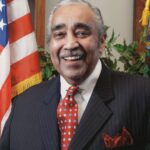

For Mary Walker, freedom was a mixed blessing. Although she escaped the bonds of slavery and made a new life for herself in Cambridge, Mass., she also left her three young children behind, enslaved in North Carolina. The separation was devastating.
But Walker was determined to reunite her family, and spent years searching for a way to do so.
The story of Mary Walker remained relatively obscure for more than a century, until historian Sydney Nathans stumbled across a letter written on her behalf. The letter was written in 1859 – 11 years after Walker fled bondage – and petitioned Walker’s former mistress in North Carolina to sell Walker’s children back to her.
“I have come to know one Mary Walker formerly in your family, and I have seen how sick at heart she is about her mother and especially her two children,” the letter read. “She thinks of nothing but her children, and speaks of nothing else … Her mother-heart yearns unspeakably after them … She has saved a considerable sum of money to buy them, can command more from friends, and will sacrifice anything to see them once again and have their young lives renew the freshness of her own weary spirit. It is in this behalf that I address you; to realize this hope of hers.”
Nathans had read thousands of letters from the slavery era, but for some reason, this one stood out.
“It was certainly the most gripping that I’ve ever seen,” Nathans, professor emeritus of history at Duke University, said in an interview with the Banner. “Who was this woman, Mary Walker? Who was the man who wrote the letter, and what happened to her children? It was a very powerful letter. Trying to appeal to a woman slave owner was not easy to do. All this was very unusual, so that set me on the trail of the story.”
Nathans started digging through archives, libraries and private collections across the country, and eventually pieced together Walker’s story. After nearly 25 years of careful research, he released the new book, “To Free a Family: The Journey of Mary Walker.”
Walker’s story, Nathans explained, defies conventional wisdom by showing how strong African American familial bonds were, even through the hardships of slavery. The idea that slavery had “snapped the chords of affection” in black families was prevalent throughout the 20th century, and especially during the 1960s, Nathans said.
“It’s not an irrational idea. Everybody who was in slavery during the 19th century faced a great possibility of separation: you could be sold; you could be property distributed after your owner died; you could be sexually violated. So it made sense that these people would harden their hearts to love and family ties; if I’m going to get hurt, let me protect myself.”
But as the research of Nathans and others shows, this assumption simply doesn’t hold. “If you track all the thousands of people who fled slavery and left families behind, they all had to prepare for what was going to happen to their families,” said Nathans. “It was a price to be paid for freedom. I realized after time, and by looking at other sources, that while Walker’s story of attempting again and again to recover the family was unusual, the feelings of loss were pervasive.”
Also unusual about Walker’s story, Nathans noted, was the help she got along the way. Walker disappeared in Philadelphia while her owners were visiting the North, and was taken in by the white Lesley family, who hired her as a seamstress.
But the Fugitive Slave Law, passed in 1850, two years after her escape, meant Walker lived under the constant threat of being taken back to slavery. “In the light of the law, she was a criminal and could be recaptured at any point,” Nathans said. “She was as free as an ‘illegal alien’ today. She moved around, had a job and was with people, but she could also be, if you want to put it this way, ‘deported’ if anyone catches her.”
To ensure greater protection, the Lesley family decided to send her to Boston, where anti-slavery leaders promised no fugitive slave would ever be caught. There, she lived on Brattle Street in Cambridge with other members of the Lesley family and worked for them as a caretaker and a seamstress. Walker had become so much a part of the family that they assisted in her quest to reunite her family – including writing the letter to her former mistress.
According to Nathans, while many Northern whites helped runaway slaves, this assistance was typically temporary. Walker, on the other hand, stayed with the Lesley family for more than two decades, until her death.
“I hope the book brings to life two things: One is to tell a story of loving relationships among an enslaved family, the second is to tell the intertwined story of the struggle for emancipation, which involved black and white people together,” Nathans said. “The people who were involved in that struggle didn’t know when or even whether it was going to lead to liberation. In the meantime, they helped to liberate those they knew.”
“The other thing I hope people get out of the book is that these were the actions of people who were pretty ordinary,” he continued. “To me that’s one of the great parts of the story: ordinary people reaching out to try to do something that most people would say can’t be done.”
Sydney Nathans will be at the Cambridge Center for Adult Education tonight, February 23, at 7 p.m. to discuss “To Free a Family.”






